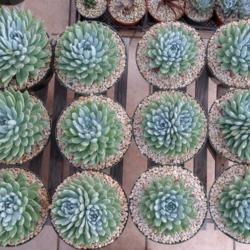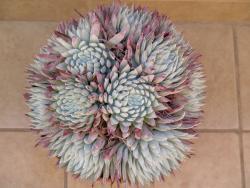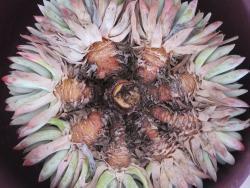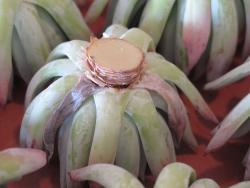For what it's worth, I think all Dudleyas that branch can be propagated this way. And the solitary ones you can force to branch by coring, then root the branches when they are big enough. Depends on how bold you are with a paring knife really.

These plants are incredibly resilient and they really want to root in the fall and winter. But you cannot grow them from leaves like you might with Echeverias or other members of that family.
There are some differences evident in the pictures above, with respect to color and rosette size... and that's not just a change in camera, it's more because of the change of seasons. At the start of spring, Dudleyas are their lushest and fullest and most photogenic. Then through spring and summer (the dry season here, their dormant season) the rosettes shrink up dramatically, and some of them change color. By the start of fall the rosettes are at their tightest and smallest. The seasonal changes might be 2-fold or so. I am not going to repot these propagations until the fall even though some of them look like they are already filling their pots. The more reliable way to know when they need a bigger pot is to do a head count. The mother plant had 18 heads in a pot just one size up from where these 1 or 2-headed plants are currently.






